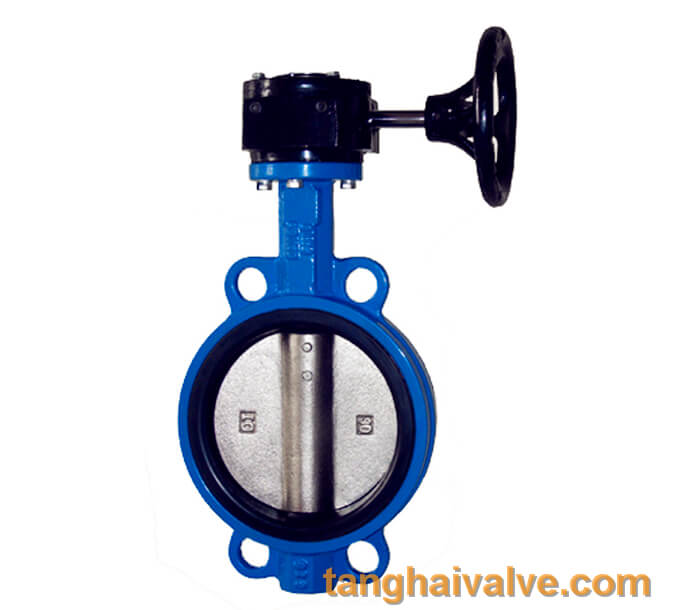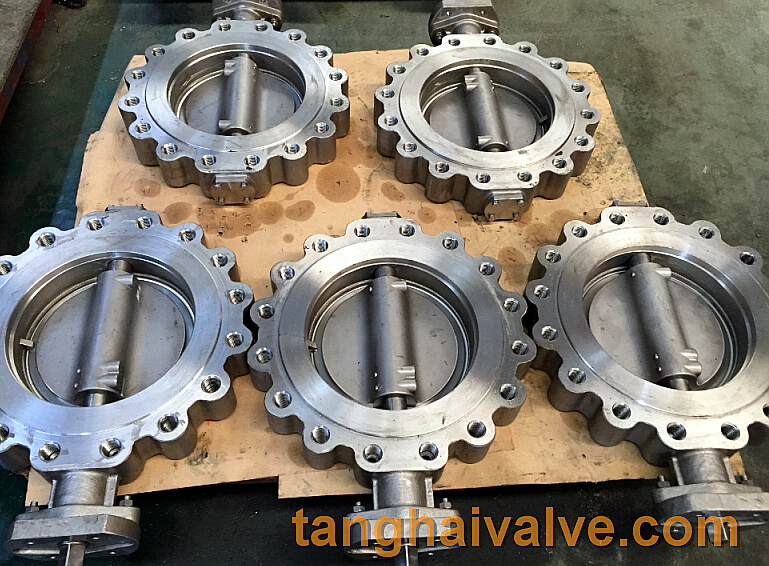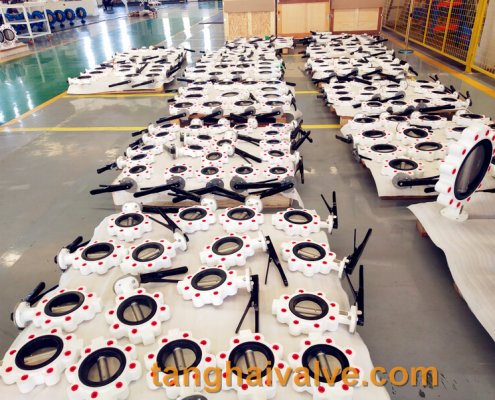Commonly used valve body materials of centerline wafer butterfly valve
The centerline butterfly valve can be controlled by a variety of transmission methods, such as manual, electric, hydraulic, pneumatic, turbine, electromagnetic, electromagnetic hydraulic, electro-hydraulic, pneumatic-hydraulic, spur gear, bevel gear drive, etc. Under the action of pressure, temperature or other forms of sensing signals, it can act according to predetermined requirements, or simply open or close without relying on sensing signals. The valve

Wafer type butterfly valve with worm gear
relies on a drive or an automatic mechanism to make the opening and closing parts move up and down, sliding, swinging or rotating, thereby changing the size of the flow channel to achieve its control function. The centerline wafer butterfly valve is very suitable for the flow adjustment of the fluid, and it is also used as the opening and closing of the medium. It is a very common pipe fitting in the industrial field. Different valve body materials will be suitable for different centerline butterfly valve classifications.
The body materials of the centerline wafer butterfly valve mainly include:
Gray cast iron: suitable for low-pressure valves with a working temperature between -15 and +200°C and a nominal pressure of PN ≤ 1.6 MPa;
Black core malleable cast iron: suitable for low- and medium-pressure valves with a working temperature between -15 and +250°C and a nominal pressure of PN≤2.5MPa;
Nodular cast iron: suitable for medium and low pressure valves with a working temperature between -30 and +350°C and a nominal pressure of PN≤4.0MPa;
Carbon steel (WCA, WCB, WCC): suitable for medium and high pressure valves with operating temperature between -29 and +425°C, of which 16Mn and 30Mn have operating temperatures between -40 and +450°C, often used to replace ASTMA105 ;
Low-temperature carbon steel (LCB): suitable for low-temperature valves and valves whose working temperature is between -46~+345℃;
Alloy steel (WC6, WC9): suitable for high temperature and high pressure valves for non-corrosive media with a working temperature between -29 and +595°C; WC5, WC12: suitable for corrosion at a working temperature between -29 and +650°C High temperature and high pressure valves for sexual media;
Austenitic stainless steel: suitable for valves with corrosive media whose working temperature is between -196~+600℃;
Monel alloy: mainly suitable for valves containing hydrogen and fluorine media;
Cast copper alloy: Mainly suitable for valves for oxygen pipelines whose operating temperature is between -273 and +200℃;
Listed above are the major categories of commonly used materials for valve bodies. In each category of material, there are many functional subdivisions for different pressure levels. In addition, the valve body materials include titanium alloy (titanium valve), aluminum alloy (aluminum valve); plastic (plastic valve); ceramic (ceramic valve) and so on. Therefore, when selecting the valve body material, the valve body material suitable for the working conditions should be determined according to different uses and different pressure levels.
The centerline wafer butterfly valve is a control component in the pipeline fluid conveying system. It is used to adjust the flow direction and flow of the medium, and has the functions of opening and closing and medium adjustment. There are many varieties and specifications, which are used to control the flow of various types of fluids such as water, steam, oil, gas, mud, various corrosive media, liquid metals and radioactive fluids, and occupy an important position in the entire valve system.
TH Valve is a professional manufacturer of butterfly valve, gate valve, check valve, globe valve, knife gate valve, ball valve with API, JIS, DIN standard, used in Oil, Gas, Marine industry, Water supply and drainage, fire fighting, shipbuilding, water treatment and other systems, with Nominal Diameter of DN50 to DN1200, NBR/EPDM/VITON, Certificates & Approvals: DNV-GL, Lloyds, DNV, BV, API, ABS, CCS. Standards: EN 593, API609, API6D
Video of center-lined butterfly valve:
Related news/knowledge:
Characteristics of the centerline wafer butterfly valve
Centerline flange butterfly valve
Advantages and Features of Center-lined Wafer Butterfly Valve
What kind of centerline wafer butterfly valve is a high-quality butterfly valve





 © Copyright 2020 Tianjin Tanghaidongyang Valve Co., Ltd. All Rights Reserved.
© Copyright 2020 Tianjin Tanghaidongyang Valve Co., Ltd. All Rights Reserved.